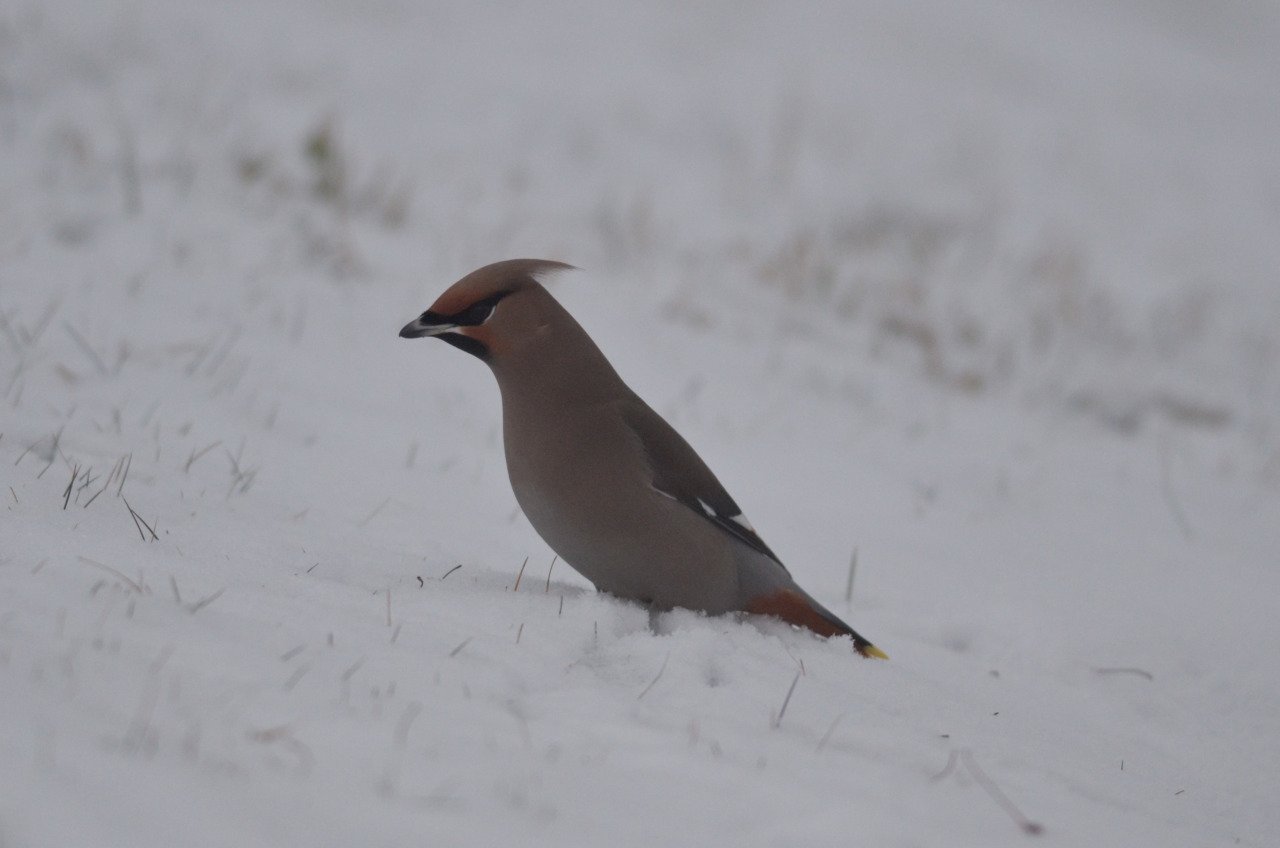Warming Waxwings
Nathaniel Sharp
7/30/2016
It can be all too easy to think that winter is a dead season, with snow on the ground and clouds in the sky, some days can be dismal and spring seems but a distant memory. Yet there is life, as some of Vermont’s most colorful and charismatic visitors arrive in Winter and are gone before spring’s thaw. Of these visitors, perhaps the most visible and visually arresting is the Bohemian Waxwing, a bird that frequents the fruit trees of campus and provides a splash of color and life on the coldest winter days.
Bohemian Waxwing feeding on berries on East Ave.
These birds browse the fruiting trees of campus towards the end of winter, with reports of flocks of hundreds within the Burlington city limits in March over the past few years. Which is why I was surprised when, on a snowy afternoon in mid-February, a flock of Bohemian Waxwings descended on the crabapples of East Ave. After running back home to grab my camera, I sat and watched a winter spectacle unfold before me.
Bohemian Waxwings look very similar to Cedar Waxwings, but are grayer, larger, and have a more colorful wing pattern.
Wings flashed as robins and Bohemian and Cedar Waxwings tried to balance on the small fruiting shrubs. Each bird picking and eating a seemingly unending stream of bright red berries to fuel their way through the winter. After about 30 minutes, the shrubs were stripped bare of every last morsel, and the flock continued its search of campus for any last fruits that had held on through the winter.
While walking back, my mind shifted from the colorful, energetic show I had just witnessed to how strange it was that on this snowy yet oddly warm day in mid-February, I had just seen a flock of Bohemian Waxwings, a bird known for its affiliation with cold, northern winters. The Bohemian Waxwing ranges across the Northern Hemisphere, from Alaska to Scandinavia, and its range just barely extends south into Vermont and New Hampshire in winter. No one can deny that we’ve had a strangely warm winter, with minimal snowfall and spring-like temperatures that must be having an effect on Vermont ecosystems. During unusual weather patterns like this, it can be interesting to look at environmental markers to see how populations are faring in such strange conditions. Birds are fantastic indicators of habitat suitability and climate, with patterns of abundance of certain species being a useful marker of ecosystem health.
Cedar Waxwings look similar, but with yellow undersides and less colorful wings.
This got me wondering, just how common is it to see Bohemian Waxwings in Burlington in February? A search of ornithological databases such as eBird and iNaturalist revealed that citizen science data collected between 2010 and 2015 showed that not a single Bohemian Waxwing had been seen in Burlington, while this year there have been two reports of Bohemian Waxwings in Burlington. While this is in no way a scientific investigation and there could be several other reasons for this discrepancy such as food availability and reproductive rates, it is nonetheless interesting that a bird sighting could lead to a train of thought about climate change, berry production, and breeding success of one of winter’s most beautiful and ephemeral guests.
On even the gloomiest winter days, if you look hard enough, there is always something interesting going on in the natural world that can keep you thinking for the rest of the day, whether it’s trees, mammals, birds, or whatever else captures your interest. Winter can be bleak at times, but if you look closely at what’s going on in the natural world around us, you never know what you may find. These Bohemian Waxwings, beautiful northern visitors to our humble campus, exhibited just how much we can interpret from our surroundings if we try to tap into the web of connections that surrounds us every day, in every season, through every interaction we have with the natural world.


